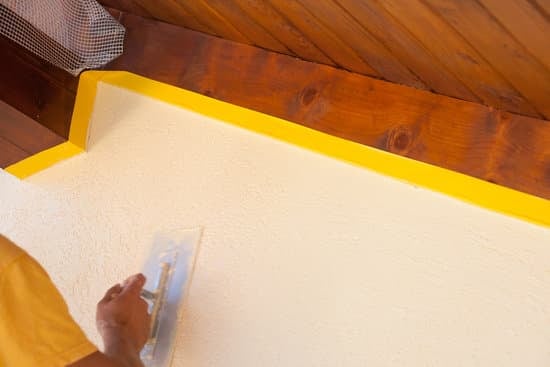Are you wondering, “Can I write off improvements to my home?” Understanding the difference between home improvements and repairs is key when it comes to tax benefits. In this article, we will explore the types of home improvements that can be written off, the guidelines set by the IRS for claiming these write-offs, and the documentation needed to support such claims.
When it comes to improving your home, certain upgrades may qualify for a tax deduction or credit. However, it’s important to differentiate between home improvements and repairs. While repairs are considered necessary fixes to maintain a property’s condition, improvements are enhancements that increase the value of a home. As a homeowner, understanding this distinction is crucial in determining what expenses can be potentially written off on your taxes.
In the following sections, we will delve into the types of home improvements that may be eligible for write-offs, as well as the specific IRS guidelines for claiming these deductions. Additionally, we will discuss the documentation required to support these write-off claims and explore potential tax benefits that homeowners may receive from writing off home improvements.
If you’re looking to maximize your tax benefits in this area, read on for valuable tips and advice on consulting with a tax professional for guidance on writing off home improvements.
Types of Home Improvements That Can Be Written Off
There are certain types of home improvements that can qualify for a write-off when it comes to your taxes. Understanding the difference between home improvements and repairs is important in determining what qualifies for a write-off.
Home improvements are enhancements that add value to your property, while repairs are fixes to maintain the current value. According to the IRS guidelines, only certain types of home improvements can be written off, so it’s essential to know which ones qualify.
The following types of home improvements can potentially be written off:
- Energy-efficient upgrades: Installing solar panels, energy-efficient windows, or a geothermal heating system
- Medical necessity renovations: Modifications for an individual with medical needs such as wheelchair ramps or bathroom grab bars
- Home office renovations: Improvements made to a designated home office space
- Capital improvements for rental properties: Upgrades made to rental properties such as replacing the roof or renovating kitchens and bathrooms
- Adaptations for aging in place: Modifications to allow seniors to age comfortably and safely in their homes
It’s important to keep in mind that not all home improvements will qualify for a tax write-off. For example, general maintenance or repairs such as fixing a leaky faucet or repairing a broken window typically do not qualify. Understanding these distinctions can help homeowners make informed decisions about their potential tax benefits.
In order to ensure that you are eligible for writing off these home improvements, it is highly recommended that you consult with a tax professional. They can provide personalized advice based on your specific circumstances and help you navigate through the documentation needed to support any write-off claims related to your home improvements.
The IRS Guidelines for Writing Off Home Improvements
When it comes to writing off home improvements, it’s important to understand the guidelines set by the IRS. This will help ensure that you are following the rules and maximizing any potential tax benefits. The guidelines provided by the IRS serve as a framework for determining which home improvements can be written off and under what circumstances.
Qualifying Home Improvements
The IRS has specific criteria for determining whether a home improvement can be written off. Generally, the improvement must add value to your home, prolong its useful life, or adapt it to new uses. Examples of qualifying improvements include adding a new room, renovating a kitchen or bathroom, replacing the roof, installing a security system, or adding energy-efficient features. On the other hand, repairs and maintenance work typically do not qualify for write-offs.
Timing of Expense
In order to write off a home improvement, it must be considered a capital expense rather than an ordinary expense. This means that the improvement must have a lasting benefit and add value to your property. It’s important to note that not all expenses incurred during home improvement projects can be written off in the year they are paid for; some expenses may need to be capitalized and deducted over time.
Depreciation of Improvements
If your home improvement qualifies for a write-off, you may still need to depreciate the cost of the improvement over time. This means spreading out the deduction over several years rather than taking it all at once. Understanding how depreciation works for home improvements is crucial for maximizing tax benefits.
By familiarizing yourself with these IRS guidelines, you
Documentation Needed to Support Write-Off Claims
Documentation is crucial when it comes to supporting claims for writing off home improvements on your taxes. This section will provide an overview of the types of documentation that are necessary to support these claims.
Receipts and Invoices
One of the most important pieces of documentation needed to support write-off claims for home improvements is receipts and invoices. These documents should clearly detail the cost of the improvement, including materials and labor. It’s important to keep these receipts organized and readily accessible in case the IRS requests them for verification.
Contracts and Agreements
In addition to receipts and invoices, contracts and agreements with contractors or service providers can also be used as supporting documentation for write-off claims. These documents should outline the scope of work, costs, and timelines associated with the home improvement project. It’s important to keep a copy of these contracts on file in case they are needed for tax purposes.
Before and After Photos
Another valuable form of documentation that can support write-off claims for home improvements is before and after photos of the project. These photos can help demonstrate the extent of the improvement made to the property, especially if it’s not immediately apparent from receipts or contracts. Keeping a comprehensive record of before and after photos can strengthen your case for claiming deductions on your tax return.
By maintaining thorough documentation, homeowners can better substantiate their claims for writing off home improvements on their taxes. This not only helps ensure compliance with IRS guidelines but also provides peace of mind knowing that you have sufficient evidence to support your deductions when filing your taxes.
Potential Tax Benefits of Writing Off Home Improvements
When it comes to potential tax benefits, homeowners may wonder “Can I write off improvements to my home?” The answer is yes, but it’s important to understand the guidelines and requirements set forth by the IRS.
Home improvements that increase the value of your property and extend its useful life can often be deducted from your taxes. This can result in significant savings for homeowners who have invested in improvements such as energy-efficient upgrades, structural modifications, or additions to their homes.
One of the key types of home improvements that can be written off for tax purposes is any improvement that adds value to your home. This includes renovations like adding a new bathroom or kitchen, installing a new HVAC system, or adding a deck or patio. These types of improvements not only enhance your living space but also increase the overall value of your property.
According to IRS guidelines, certain energy-efficient home improvements may also qualify for tax credits. This can include things like solar panels, energy-efficient windows and doors, insulation upgrades, and more. These credits provide homeowners with a dollar-for-dollar reduction in their tax liability, making them incredibly valuable when it comes to potential tax benefits for writing off home improvements.
| Home Improvements | Tax Benefits |
|---|---|
| Addition of a new bathroom or kitchen | Increased property value and potential deductions |
| Energy-efficient upgrades (solar panels, windows) | Potential tax credits and reduced tax liability |
Common Misconceptions About Writing Off Home Improvements
Many homeowners are often confused about what home improvements they can write off on their taxes. It is important to understand the common misconceptions about writing off home improvements in order to make informed decisions when it comes to tax time.
One common misconception is that any home improvement can be written off as a tax deduction. However, the IRS has specific guidelines regarding what types of home improvements qualify for tax benefits. Understanding the difference between home improvements and repairs is essential, as only certain types of improvements can be claimed as deductions.
Another misconception is that only major renovations or additions to a home can be written off. In fact, there are various types of home improvements that may qualify for tax benefits, including energy-efficient upgrades, medical modifications, and certain home office expenses. Understanding these different categories of improvements can help homeowners maximize their potential tax deductions.
Additionally, some homeowners believe that they do not need to keep detailed documentation of their home improvement expenses in order to claim them on their taxes. However, keeping thorough records and receipts is crucial when it comes to supporting write-off claims for home improvements. It is important to have documentation readily available in case of an IRS audit.
- Home improvements must meet IRS guidelines
- Not all types of improvements are eligible for write-offs
- Keeping detailed records and receipts is crucial
Tips for Maximizing Write-Offs for Home Improvements
When it comes to maximizing write-offs for home improvements, there are several tips that homeowners can follow to ensure they are getting the most out of their tax benefits. One important tip is to keep detailed records of all home improvement expenses, including receipts, invoices, and contracts.
This documentation can help support any write-off claims and provide evidence in case of an IRS audit. It is also crucial to understand the difference between home improvements and repairs, as only certain types of improvements can be written off.
Another tip for maximizing write-offs for home improvements is to be aware of the IRS guidelines for what qualifies as a deductible expense. The IRS has specific rules regarding what can be considered a capital improvement and what cannot. For example, cosmetic upgrades such as painting or landscaping typically do not qualify as deductible home improvements, while adding a new roof or installing energy-efficient windows usually does.
Finally, homeowners should consider consulting with a tax professional to ensure they are taking full advantage of available tax benefits for home improvements. A tax professional can provide personalized guidance based on individual circumstances and help homeowners navigate the complex rules and regulations surrounding write-offs for home improvements.
| Tips for Maximizing Write-Offs | For Home Improvements |
|---|---|
| Keep detailed records of all expenses | Understand the IRS guidelines for deductibility |
| Consult with a tax professional | Be aware of the difference between improvements and repairs |
Consultation With a Tax Professional for Writing Off Home Improvements
In conclusion, the decision to write off home improvements can have significant tax benefits for homeowners, but it is crucial to understand the IRS guidelines and requirements. It is important to differentiate between home improvements and repairs, as only specific types of improvements are eligible for write-offs. The IRS provides clear guidelines for what can be considered a write-off, and homeowners must ensure that they have the necessary documentation to support their claims.
While there are potential tax benefits to writing off home improvements, it is essential for homeowners to be aware of common misconceptions about this process. Consulting with a tax professional who has expertise in this area can provide valuable guidance and ensure that homeowners maximize their write-offs while staying within the bounds of the law. By working with a knowledgeable professional, homeowners can gain insight into tips for maximizing their write-offs and avoiding potential pitfalls.
Ultimately, navigating the process of writing off home improvements requires careful consideration and adherence to IRS guidelines. Seeking expert advice from a tax professional can help homeowners make informed decisions and take full advantage of any potential tax benefits. With the right support and understanding of the rules and requirements, homeowners
Frequently Asked Questions
Can You Use Home Improvements as a Tax Write Off?
Yes, you can use home improvements as a tax write off under certain circumstances. Generally, the improvements must be considered necessary for medical purposes or to accommodate a disability. Consult with a tax professional to fully understand the eligibility criteria.
Can You Depreciate Improvements to Your Home?
Yes, you can depreciate improvements to your home if they meet the IRS definition of a capital improvement. This means that the improvement must add value to your home or prolong its useful life. Regular maintenance and repairs do not qualify for depreciation.
What Qualifies as Capital Improvements?
Capital improvements typically include significant upgrades or additions that enhance the value of your property. Examples can range from adding a new roof or swimming pool to renovating a kitchen or bathroom. These improvements are considered long-term investments and should be distinguished from regular repairs and maintenance expenses.

I’m thrilled to have you here as a part of the Remodeling Top community. This is where my journey as an architect and remodeling enthusiast intersects with your passion for transforming houses into dream homes.





